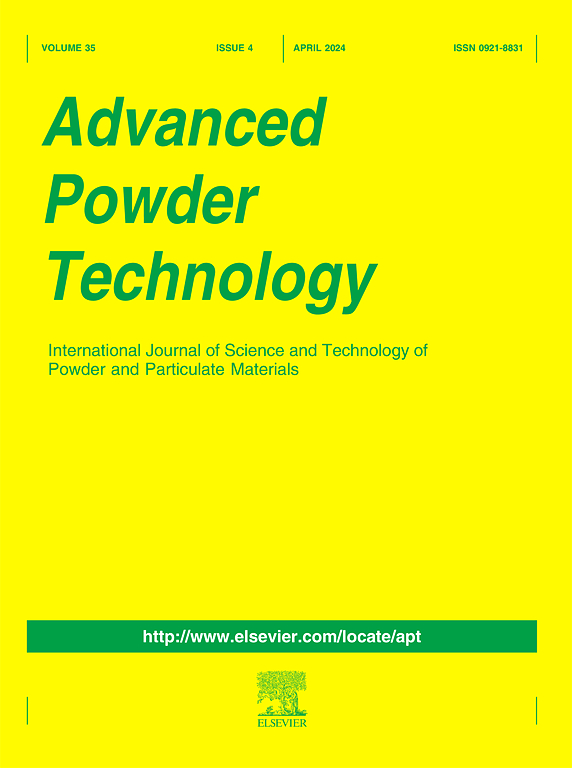In-situ construction of spherical N-doped carbon loaded with catalytic tungsten semicarbide nanoparticles for highly efficient sulfur removal from fuel oils
IF 4.2
2区 工程技术
Q2 ENGINEERING, CHEMICAL
引用次数: 0
Abstract
Recently, transition-metal carbides (TMCs) have been developed as good catalyst candidates for oxidation desulfurization (ODS) reactions. However, improving their stability in strong oxidizing media remains a challenge. Herein, a W2C catalyst protected by spherical N-doped carbon was constructed in-situ through a facile one-step thermal annealing process using phosphotungstic acid and zinc phthalocyanine microsphere (ZnPcMS) as the W and carbon sources, respectively. During annealing, the spherical N-doped carbon matrix (SNC) was simultaneously derived from ZnPcMS and combined closely with the in-situ formed W2C, preventing W2C from oxidation. The W2C/SNC catalyst system, when combined with H2O2 as the oxidant, exhibits remarkable ODS performance. Desulfurization of model fuel oils can be achieved with 100 % efficiency within 25 min with a small H2O2 to S molar ratio of 3. Moreover, W2C/SNC possesses superior reusability. A non-free radical oxidation mechanism is suggested for the ODS reaction based on radical scavenging tests. The as-prepared W2C/SNC microspheres could serve as potential effective ODS catalysts.

原位构建负载半碳化钨纳米颗粒的球形氮掺杂碳催化高效脱硫燃料油
近年来,过渡金属碳化物(TMCs)已成为氧化脱硫(ODS)反应的良好催化剂。然而,提高它们在强氧化介质中的稳定性仍然是一个挑战。本文以磷钨酸和酞菁锌微球(ZnPcMS)为W源和碳源,通过简单的一步热退火工艺,原位构建了球形n掺杂碳保护的W2C催化剂。在退火过程中,球状n掺杂碳基体(SNC)同时从ZnPcMS中生成,并与原位形成的W2C紧密结合,防止了W2C的氧化。W2C/SNC催化剂体系以H2O2为氧化剂,表现出良好的ODS性能。当H2O2与S的摩尔比为3时,模型燃料油的脱硫效率在25 min内达到100%。此外,W2C/SNC具有优越的可重用性。基于自由基清除试验,提出了ODS反应的非自由基氧化机制。制备的W2C/SNC微球可作为ODS的有效催化剂。
本文章由计算机程序翻译,如有差异,请以英文原文为准。
求助全文
约1分钟内获得全文
求助全文
来源期刊

Advanced Powder Technology
工程技术-工程:化工
CiteScore
9.50
自引率
7.70%
发文量
424
审稿时长
55 days
期刊介绍:
The aim of Advanced Powder Technology is to meet the demand for an international journal that integrates all aspects of science and technology research on powder and particulate materials. The journal fulfills this purpose by publishing original research papers, rapid communications, reviews, and translated articles by prominent researchers worldwide.
The editorial work of Advanced Powder Technology, which was founded as the International Journal of the Society of Powder Technology, Japan, is now shared by distinguished board members, who operate in a unique framework designed to respond to the increasing global demand for articles on not only powder and particles, but also on various materials produced from them.
Advanced Powder Technology covers various areas, but a discussion of powder and particles is required in articles. Topics include: Production of powder and particulate materials in gases and liquids(nanoparticles, fine ceramics, pharmaceuticals, novel functional materials, etc.); Aerosol and colloidal processing; Powder and particle characterization; Dynamics and phenomena; Calculation and simulation (CFD, DEM, Monte Carlo method, population balance, etc.); Measurement and control of powder processes; Particle modification; Comminution; Powder handling and operations (storage, transport, granulation, separation, fluidization, etc.)
 求助内容:
求助内容: 应助结果提醒方式:
应助结果提醒方式:


